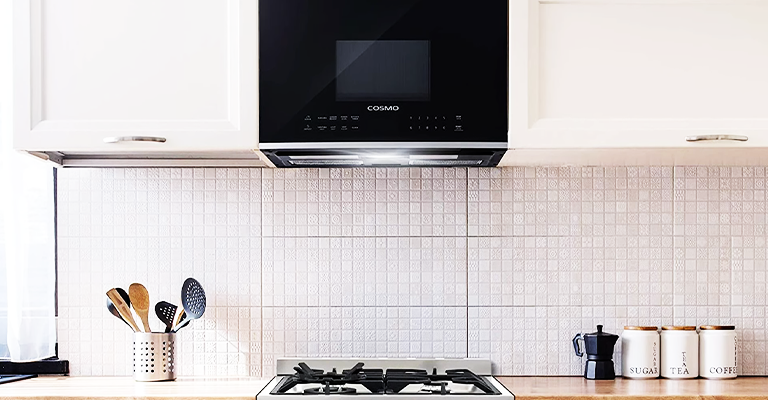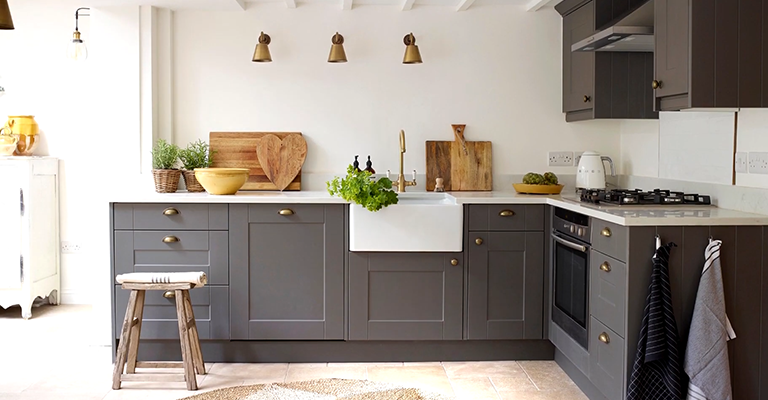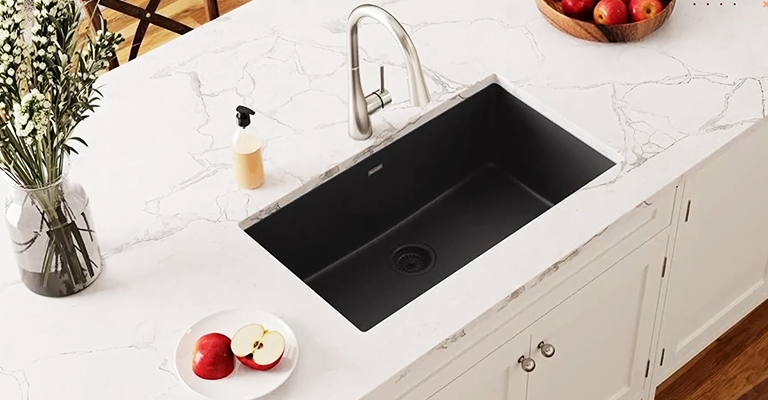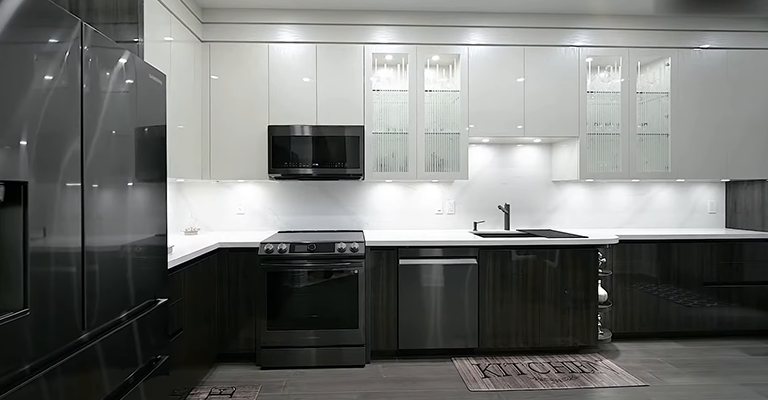Why Is My Induction Hob Making a Noise?-Decoding Induction Hob Noises
The Induction hobs have revolutionized cooking with their efficiency and precision. However, users often wonder about the noises these appliances make during operation.
Discerning the causes behind these sounds is pivotal for both the hob’s functionality and user satisfaction. From the soft hum of cooling fans to the occasional clicks when adjusting settings, these auditory clues carry valuable insights.
This guide delves into these noises, shedding light on their origins, and helping users distinguish between routine operations and potential issues.
By grasping these acoustic signals, users can effectively maintain their induction hob, ensuring it operates optimally and enhancing their overall cooking experience.
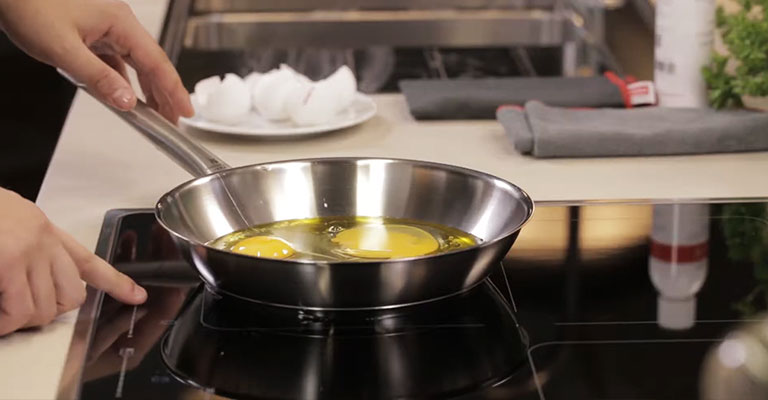
Why Is My Induction Hob Making a Noise?
An induction hob, like any other appliance, can make various noises for a variety of reasons.
Here are some common reasons why your induction hob might be making a noise:
Fan Noise
Induction hobs are equipped with built-in fans to maintain a safe operating temperature. The fan may operate at various speeds depending on the heat level selected.
It’s akin to a computer’s cooling fan and is designed to ensure that the internal components don’t overheat during extended use. The fan noise is typically a low-level hum or gentle whirring sound.
Cooling System
As with any device, induction hobs have a cooling system to regulate temperatures. After prolonged use, you may notice a subtle gurgling or trickling noise.
This is the sound of the coolant circulating through the system to dissipate heat, ensuring the hob remains within safe operating temperatures.
Vibrations
Induction hobs can generate a slight vibration, particularly if the cookware isn’t evenly centered on the surface.
This can result in a faint buzzing or humming sound. Ensuring that your cookware is properly positioned on the hob can help minimize this vibration and subsequently, the noise.
Clicking Sounds
Some induction hobs make clicking sounds when they’re adjusting power levels or regulating temperature.
This is part of the normal operation of the hob. It’s often associated with the electronics regulating the electromagnetic field.
Electromagnetic Noise
Induction hobs rely on electromagnetic fields to generate heat.
This process can produce an extremely faint humming or buzzing sound. However, this noise is typically so subtle that it’s barely discernible and is considered normal operation.
Loose Components
Occasionally, due to wear and tear or other factors, components within the hob may become loose.
This can result in vibration or rattling noises during operation. This might range from something as simple as a loose screw to a detached fan blade.
Defective Components
In rare cases, a component within the induction hob may be malfunctioning or nearing failure.
This could lead to unusual or loud noises. In such instances, it’s advisable to have a qualified technician inspect and, if necessary, repair the hob.
Cookware Issues
The type and quality of cookware used can influence the noise levels. Cookware with uneven or damaged bottoms may produce more noise as it comes into contact with the hob’s surface.
Choosing quality, well-maintained cookware can help minimize this.
External Factors
Sometimes, what you perceive as noise from the induction hob may actually be coming from an external source.
This could be another appliance in the vicinity, a loose item in the kitchen, or even an echo in the room. It’s worth checking the surroundings to rule out these potential sources of the noise.
Troubleshooting Steps
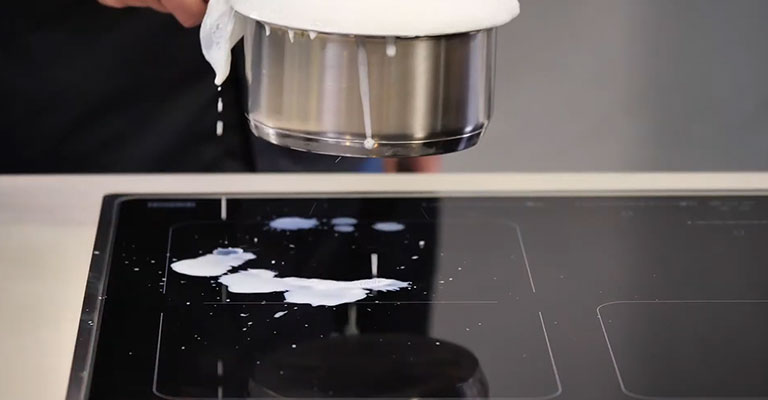
Induction hobs are reliable appliances, but occasional hiccups may arise. If you encounter any problems, here are some troubleshooting steps to help identify and potentially resolve the issue.
Hob Not Heating Up
- Cause: This could be due to incompatible or damaged cookware, an issue with the power supply, or a malfunction in the hob itself.
- Solution: Check that the cookware is compatible with induction hobs (it should have a flat, magnetic base). Verify the power supply by testing a different outlet or ensuring the circuit breaker is functioning properly.
Uneven Heating
- Cause: Uneven heating may occur if the cookware is not centered properly on the hob’s surface.
- Solution: Ensure the cookware is placed centrally on the hob to ensure even distribution of heat.
Error Codes Displayed
- Cause: Modern induction hobs often have diagnostic features that display error codes when a problem is detected.
- Solution: Refer to the user manual to identify the specific error code and follow the recommended steps for resolution.
Hob Shuts Off Unexpectedly
- Cause: This could be due to a safety feature triggered by overheating or an electrical issue.
- Solution: Allow the hob to cool down before attempting to use it again. Check for any obstructions around the ventilation areas. If the issue persists, contact a technician for a thorough inspection.
Excessive Noise
- Cause: Noises such as humming, buzzing, or clicking are normal during hob operation. However, unusually loud or persistent noises may indicate loose components or a malfunction.
- Solution: Check for loose components and tighten any screws or fasteners. If the noise persists, or if it’s particularly loud, seek assistance from a qualified technician.
Touch Controls Not Responding
- Cause: This could be due to a sensitivity adjustment, a malfunction in the touch controls, or a power supply issue.
- Solution: Adjust the touch sensitivity settings, if available in the hob’s menu. Clean the control panel gently with a soft, dry cloth to remove any dirt or residue. If the issue persists, contact a technician for further assistance.
Flashing Lights or Flickering Display
- Cause: This may be due to electrical fluctuations, a loose connection, or a malfunction in the control panel.
- Solution: Check the power supply and ensure all connections are secure. If the issue continues, consult a technician to inspect and potentially replace any faulty components.
Maintenance and Care
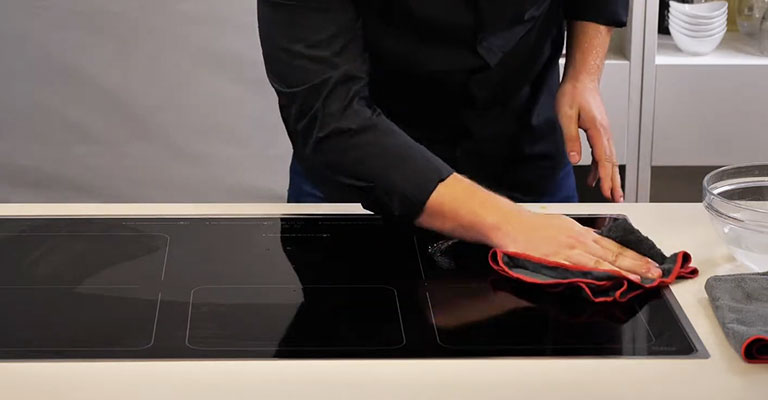
Maintaining and caring for your induction hob is crucial to ensure its longevity and optimal performance.
Here’s a guide on how to maintain and care for your induction hob:
Regular Cleaning
Regularly clean the hob after each use to prevent the buildup of food residue. Use a soft, damp cloth or sponge along with a mild, non-abrasive cleaning agent suitable for induction hobs.
For tougher stains, create a mixture of baking soda and water, applying it gently with a soft cloth.
Avoid Scratches and Scuffs
Utilize cookware with smooth, flat bottoms to prevent scratches on the glass surface. Avoid sliding or dragging pots and pans across the hob’s surface, as this can cause scuffs and scratches.
Prevent Boilovers
To prevent spills and boilovers, use cookware that matches the size of the cooking zone. Ensure the cookware is centered on the cooking zone. Additionally, consider using lids on pots and pans to contain splatters.
Remove Spills Promptly
Spills and boilovers should be promptly removed to prevent them from adhering to the hob’s surface and becoming difficult to clean.
Use Soft Cookware Protectors
Consider placing soft cookware protectors or silicone mats on the hob’s surface to prevent scratches or damage when moving pots and pans.
Regular Inspection
Periodically check the control panel for any signs of damage or wear. If you notice any issues, such as malfunctioning touch controls or worn-out labels, consider replacing them to maintain safe operation.
Ventilation and Airflow
Ensure that the ventilation areas around the hob are free from obstructions to allow proper airflow, which is important for cooling.
Routine Maintenance
Adhere to the manufacturer’s recommendations for routine maintenance, which may include cleaning air filters and replacing them if necessary.
Electrical Safety
Regularly inspect the power cord and plug for any damage or fraying. If you notice issues, have them repaired or replaced by a qualified technician.
Safety Precautions
Follow all safety guidelines and instructions provided in the user manual. This includes avoiding unnecessary exposure to the electromagnetic field generated by the hob.
When to Seek Professional Help?
Knowing when to seek professional help for your induction hob is crucial for ensuring safety and proper functionality.
Here are some situations where it’s advisable to consult a qualified technician:
Electrical Issues
When you notice any problems with the power supply, such as a blown fuse, tripped circuit breaker, or issues with the power cord or plug, it’s best to seek professional assistance.
Attempting to fix electrical issues without the proper expertise can be dangerous.
Persistent Error Codes
When your hob displays error codes that persist even after you’ve followed the recommended troubleshooting steps in the manual, it’s time to contact a professional.
This could indicate a deeper issue that requires specialized knowledge to diagnose and fix.
Unusual Noises
While some noise is normal during hob operation, particularly humming or clicking, any loud, persistent, or unusual noises should be investigated by a technician. These can be signs of loose components or internal malfunctions.
Hob Not Heating Properly
When the hob is not reaching the desired temperatures or is heating unevenly, it could indicate a problem with the induction elements, control panel, or internal wiring. A technician can diagnose and rectify the issue.
Physical Damage
When the hob’s surface is cracked, chipped, or otherwise damaged, it’s important to consult a professional. Attempting to use a damaged hob can be hazardous and may lead to further issues.
Touch Controls Not Responding
When the touch controls are unresponsive or behaving erratically, it may indicate a problem with the control panel or wiring. A technician can assess and repair the issue safely.
Safety Concerns
When you suspect a safety issue with your induction hob, such as overheating, unusual odors, or other signs of malfunction, it’s imperative to seek professional help immediately. Continuing to use a potentially unsafe hob can pose serious risks.
Warranty and Extended Service Agreements
When your hob is still under warranty or covered by an extended service agreement, it’s recommended to contact the manufacturer or service provider for assistance. Attempting to perform repairs on your own may void the warranty.
DIY Attempts Have Failed
When you’ve attempted to troubleshoot and fix an issue yourself but haven’t been successful, it’s time to call a professional.
Continuing to tinker with the hob without expertise can worsen the problem.
Regular Maintenance and Servicing
Regular professional maintenance is advisable to keep your hob in top condition.
This can help prevent potential issues and ensure that the appliance operates efficiently and safely.
FAQs
Why is my induction hob making a humming sound?
A low humming sound is normal and indicates that the built-in fan is working to cool down internal components during operation.
Is it normal for my induction hob to make a clicking noise?
Yes, clicking noises are often associated with the hob adjusting power levels or regulating temperature.
What could be causing a buzzing noise from my induction hob?
A faint buzzing sound is typically associated with the generation of electromagnetic fields used for heating.
Why does my induction hob make a gurgling or trickling noise after use?
This noise indicates that the cooling system is circulating coolant to regulate temperatures.
What should I do if my induction hob is making unusually loud or persistent noises?
Unusually loud or persistent noises may indicate loose components or a malfunction.
To Recap
It’s not uncommon for an induction hob to produce various noises during operation. The low hum of the cooling fan, occasional clicks when adjusting settings, and faint buzzing from electromagnetic fields are typically normal.
However, if you encounter unusually loud or persistent noises, it’s important to address them promptly. Loose components, cookware issues, or potential malfunctions may be at play.
Regular maintenance, such as keeping the hob clean and ensuring proper cookware placement, can minimize these noises.
When concerns persist, seeking professional help ensures the hob continues to function safely and efficiently, providing a reliable cooking experience for years to come.
